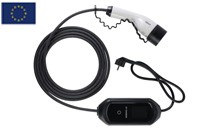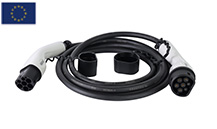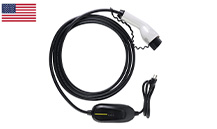Charging problems and range are still the problems that users of new energy vehicles complain about more often, which is also a key factor limiting the further development of new energy vehicles. To solve the problems of long single charge time and alleviate users' charging and mileage anxiety, the development of high-power charging has become a general consensus among domestic and foreign industry participants.
To achieve fast charging it is necessary to improve the charging power, where charging power = charging current * charging voltage, which means there are two technical routes to take to improve the charging power: to improve the battery voltage or to improve the charging current.
According to the planning of high-current charging by GB/T, CHAdeMO, CCS, Tesla and other standards, it can be seen that liquid-cooled charging has become a key technology for high-current charging.
At present, high power charging mainly increases the charging current on the basis of not raising the voltage platform of the whole vehicle. However, the increase of charging current will make the connector and cable heat continuously increase, resulting in a rapid rise in temperature, and the continuous high temperature will easily damage the electronic components of the charging device, and in serious cases, it will also cause safety accidents such as burnout. In order to avoid safety accidents and reduce the heat generation of the charging device and thus reduce the temperature rise, increasing the cross-sectional area of the conductor and insulation layer is a common solution, but increasing the cross-sectional area of the conductor will also significantly increase the weight of the cable, too heavy cable is not conducive to user use, while the use of liquid-cooled technology can significantly reduce the cross-sectional area of the cable, the weight of the entire cable is also lighter, user-friendly operation.
The high-power liquid-cooled charging cable is equipped with a circulation pipe between the connector, the cable and the charging pile, and coolant is added inside the pipe, which is driven by an electronic pump to circulate the coolant and take away the heat generated by the coolant when it flows through the cable, thus playing the role of heat dissipation.
The second technical route to enhance the charging power: to enhance the overall vehicle platform voltage. It has become a consensus among car companies to raise the battery voltage to 800V. Due to the limited voltage resistance of silicon-based IGBT power components, the high-voltage system of electric vehicles generally adopts a 400V voltage platform, but of course, if you want to further increase the charging power and shorten the charging time, you need to upgrade the voltage platform and raise the 400V to 800V, 1000V or even higher, so as to realize the expansion of the high-voltage system. This is not a simple matter, 800V high-voltage architecture requires the battery pack, electric drive, PTC, air conditioning compressor, on-board charger, etc. of electric vehicles to be re-selected.
In order to adapt to the development of high-power charging technology and keep up with the market trend, FAFA-E has strategically cooperated with OMG, a world-renowned cable manufacturer, to develop a high-power liquid-cooled charging cable with charging efficiency increased from 250A to 600A, which greatly improves the charging speed of EVs and reduces users' charging anxiety.






 简体中文
简体中文
